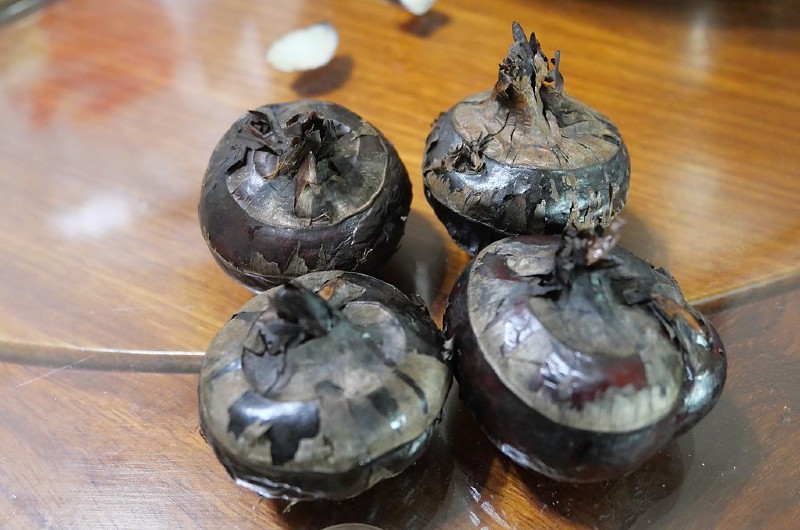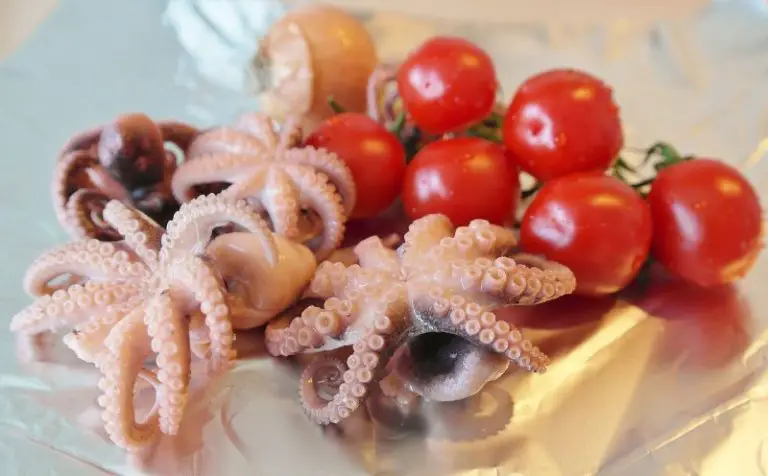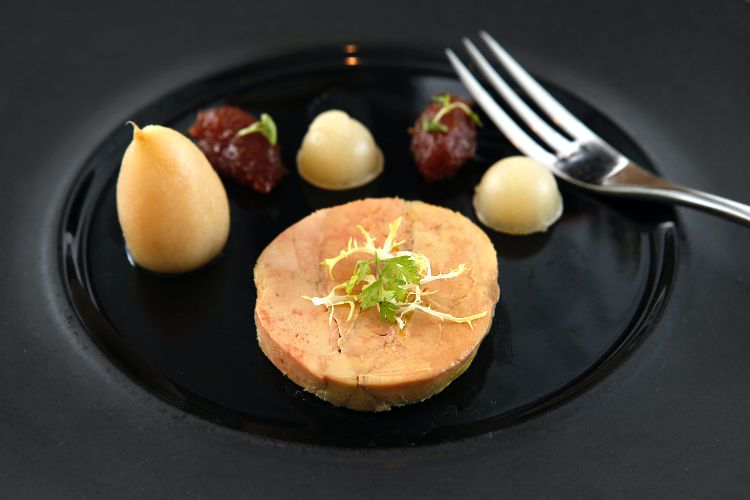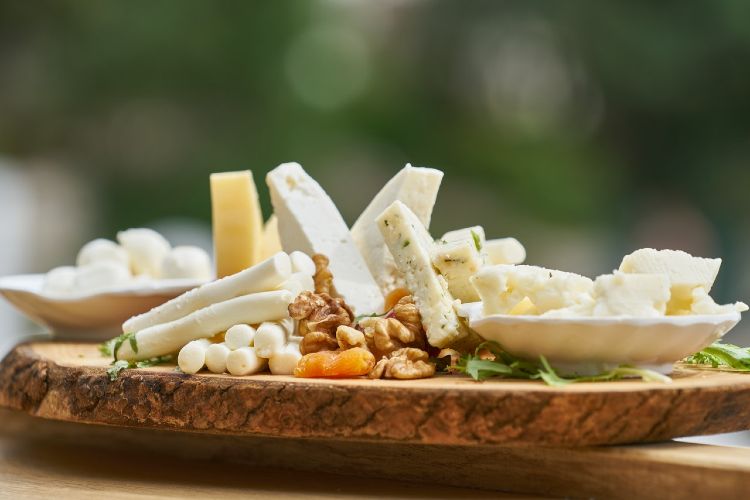Sizzling Substitutes: Top Water Chestnut Substitutes for Show-Stopping Dishes!
Water chestnuts are aquatic veggies. They’re native to Asia. Not really nuts, but tubers. They grow underwater in marshes.
In taste, they are slightly sweet and nutty. The texture is crisp and juicy. They remain crunchy, even after cooking. They are commonly used in Asian recipes. Stir-fries, dumplings, spring rolls often include them. Also popular in Western salads for crunch.
Why Substitutes?
Why look for substitutes? There can be several reasons. Water chestnuts may not be easily available everywhere. Some people might have allergies. Others might simply want to experiment with different flavors and textures. Hence, knowing some good substitutes is useful.
Qualities of An Ideal Substitute
Similarity in Taste
A good substitute will match water chestnuts’ taste. It should have a mild, slightly sweet and nutty flavor.
Similarity in Texture
Texture is vital. Water chestnuts are known for their crunch. They stay firm even when cooked. The ideal substitute must retain a similar crispness.
Availability and Affordability
The best substitutes are easy to find and affordable. It doesn’t help if the substitute is rare or too expensive.
Versatility in Different Types of Cuisine
Finally, versatility is key. The substitute should work well in a variety of dishes. It should fit in with Asian recipes and Western salads alike.
Substitutes for Raw Water Chestnuts
Jicama
Jicama is a root vegetable, originally from Mexico. It’s often mistaken for a giant potato. The texture is crisp, the taste mild, somewhat similar to an apple but less sweet. Like raw water chestnuts, jicama is crunchy and retains its crispness even when chilled.
Jicama can be eaten raw. Just peel and slice or dice it. Great in fresh salads, spring rolls, or even as a crudité. It pairs well with citrusy dressings. A superb substitute for raw water chestnuts.
Radishes
Radishes come in many varieties. Common ones are red and small, but daikon radishes are larger and white. They are crunchy, offering a peppery bite. While the taste is more spicy than water chestnuts, the crunchy texture is quite similar.
Radishes can be used raw in salads, slaws, or garnishes. They can add an unexpected kick to the dish. Sliced thin, they can substitute for water chestnuts in sushi or spring rolls. The spiciness can be a pleasant surprise.
Celery Root
Celery root, or celeriac, is a type of celery grown for its root. It’s brown on the outside but white and crunchy inside. The flavor is mild, earthy, with a hint of sweetness. It has the firm texture similar to raw water chestnuts.
Celery root is great raw. You need to peel it first. Then, slice or dice for use. It can replace water chestnuts in salads. Also, it’s a great snack when served with a tangy dip. It adds a nice crunch to dishes replacing raw water chestnuts.
Lotus Root
Lotus root, derived from the aquatic plant Nelumbo nucifera, is a popular ingredient in Asian cuisine. It boasts a similar crisp texture to water chestnuts and offers a mild, slightly sweet flavor.
Lotus root can be sliced and used in various dishes, particularly in soups and stews, where it adds both texture and taste. Its unique appearance, with distinctive holes or “eyes,” makes it an eye-catching addition to any culinary creation.
Turnips
Turnips, belonging to the Brassica family, are root vegetables popular for their versatility and nutrition. They offer a refreshing, crunchy bite and a subtly peppery taste.
When sliced or diced, turnips can be used as a suitable substitute for water chestnuts in stir-fries, salads, and other dishes, bringing a delightful and wholesome element to your meals.
Substitutes for Cooked Water Chestnuts
Bamboo Shoots
Bamboo shoots are young, tender bamboo stems. They are pale yellow in color. The texture is firm yet tender. Like water chestnuts, they keep their crunchiness when cooked. They have a subtle, slightly sweet flavor.
Bamboo shoots work great in a variety of Asian dishes. They can replace water chestnuts in stir-fries, soups, or spring rolls. They’re typically available canned, making them an easy alternative.
Canned Artichoke Hearts
Artichoke hearts are the tender centers of artichokes. They have a slightly nutty, sweet flavor. The texture is similar to cooked water chestnuts. It’s firm but not as crunchy.
Canned artichoke can substitute water chestnuts in pasta dishes, salads, or dips. They also work well in stir-fries and other cooked dishes. A good choice for a more subtle flavor profile.
Jerusalem Artichokes (Sunchokes)
Jerusalem artichokes, also known as sunchokes, are tubers. They’re not actually artichokes. They have a sweet, nutty flavor, similar to water chestnuts. The texture is slightly less crunchy when cooked.
Sunchokes can replace water chestnuts in a variety of cooked dishes. They work well in stews, stir-fries, or roasted with other veggies. Also a great substitute in gratins or purees. Their sweet taste can complement many recipes.
Water Chestnut Alternative: Tubers and Root Vegetables
Sweet Potatoes
Sweet potatoes, scientifically known as Ipomoea batatas, are a nutritious root vegetable. With a natural sweetness and a firm texture, sweet potatoes can be used as a water chestnut alternative in various dishes.
Sliced or diced, they work well in stir-fries, curries, and even desserts, offering a delightful balance of flavors and colors to your meals.
Potatoes
Potatoes, belonging to the Solanaceae family, are a staple in many cuisines around the world. When sliced or diced, they can mimic the texture of water chestnuts and are a suitable replacement in a wide range of dishes.
From hearty soups and stews to refreshing salads, potatoes add a comforting element to your recipes while absorbing the flavors of the other ingredients.
Taro Root
Taro root, derived from the Colocasia esculenta plant, is a starchy root vegetable widely used in Asian cuisine. With a nutty flavor and a soft texture, taro root serves as a unique substitute for water chestnuts in certain dishes.
It can be boiled, steamed, or fried and used in soups, stews, or even desserts, providing an exotic touch to your culinary creations.
Nut-based Substitutes
Macadamia Nuts
Macadamia nuts are native to Australia. They are rich, buttery and slightly sweet. When raw, their texture is firm and crunchy, similar to raw water chestnuts.
Raw macadamias can be used in salads, desserts, or eaten as a snack. Their rich flavor complements sweet and savory dishes. They can be an innovative substitute for water chestnuts in any recipe.
Blanched Almonds
Almonds are nuts with a mildly sweet flavor. Blanched almonds have their skins removed. They offer a crunchy texture, much like water chestnuts.
Blanched almonds can be sliced and used in salads, stir-fries, and baked goods. They work well in both sweet and savory dishes. A tasty and nutritious alternative to water chestnuts.
Chestnuts
Chestnuts are the edible nuts of various species of the Castanea genus. They offer a sweet and nutty flavor, making them an excellent alternative to water chestnuts in both savory and sweet dishes.
Roasted chestnuts can be chopped or sliced and added to salads, stuffing, and stir-fries, providing a delightful taste and a slightly crunchy texture to your culinary creations.
Pine Nuts
Pine nuts are the edible seeds of pine trees and are known for their mild nutty flavor. They offer a soft texture, making them a suitable substitute for water chestnuts in salads and pasta dishes.
Pine nuts can be lightly toasted to enhance their flavor and aroma, and they make a delightful addition to both savory and sweet recipes.
Dietary Restrictions Options
Gluten-free Options
Many of our suggested substitutes are naturally gluten-free. Jicama, radishes, celery root, bamboo shoots, and sunchokes fit the bill. They’re safe for those with gluten intolerance.
Nut-free Options
For people with nut allergies, veggies are the way to go. Jicama, radishes, celery root, bamboo shoots, and artichoke hearts are excellent choices. They’re nut-free but provide a similar crunch.
Low-carb or Keto-friendly Options
If you’re following a low-carb or keto diet, consider your options. Jicama, radishes, and celery root are low in carbs. Bamboo shoots and artichoke hearts too. They’re great substitutes for water chestnuts.
How to Use Each Substitute
- Jicama and Celery Root: Peel the skin first. Then, slice or dice as needed.
- Radishes: Wash thoroughly. Slice thin for salads or sushi.
- Bamboo Shoots: If canned, rinse well before use. Slice or dice as required.
- Artichoke Hearts: If canned, drain the liquid. Use whole or chopped.
- Sunchokes: Wash and scrub clean. Peel if desired. Can be sliced, diced or roasted whole.
- Nuts: Use raw for maximum crunch. Slice or chop as needed.
Recipes Using Substitutes
Asian Cuisine Recipes
- Jicama or Bamboo Shoot Stir-fry: Use instead of water chestnuts. Adds a crunchy texture.
- Radish or Sunchoke Spring Rolls: Offers a unique twist on a classic dish.
Salads and Western Cuisine Recipes
- Celery Root or Artichoke Heart Salad: Crunchy and refreshing. A different take on a standard salad.
- Macadamia Nut or Blanched Almond Coleslaw: Adds a nutty crunch. A great side dish for barbecues.
Snack or Appetizer Recipes
- Jicama or Radish Crudité: Serve with your favorite dip. A light and healthy snack.
- Roasted Sunchokes or Toasted Almonds: Perfect for a crunchy, nutritious nibble.
FAQs
Can I use the same substitute for both raw and cooked water chestnuts?
It depends on the recipe and the substitute. Some alternatives like jicama and radishes work well as raw substitutes but may not hold up well when cooked. Experiment and see what works best for your dish.
Are all these substitutes available year-round?
Availability can depend on your location and the time of year. However, many substitutes like canned bamboo shoots and artichoke hearts are available year-round in most supermarkets. Fresh vegetables like jicama, radishes, and celery root might have specific seasons.
I’m on a keto diet. Which substitutes can I use?
Low-carb options include jicama, radishes, celery root, bamboo shoots, and artichoke hearts. You could also consider macadamia nuts or blanched almonds, but remember to check the net carb content to ensure they fit within your daily macros.
Are these substitutes similar in nutrition to water chestnuts?
While they offer similar textures, each substitute has its own nutritional profile. For example, jicama and celery root are high in fiber, while macadamia nuts and blanched almonds provide healthy fats. It’s always good to check the nutritional information depending on your dietary needs.
Can I use canned versions of these substitutes?
Absolutely! Canned versions of bamboo shoots or artichoke hearts are a convenient and readily available substitute for water chestnuts. Just remember to rinse them before use to remove any excess sodium.
Are water chestnut substitutes suitable for gluten-free diets?
Yes, most water chestnut substitutes, especially the plant-based options like jicama, lotus root, and sweet potatoes, are naturally gluten-free and can be safely consumed by those with gluten sensitivity or celiac disease.
Can I use water chestnut flour in place of other flour substitutes?
While water chestnut flour is gluten-free and can be used as a thickener, it might have a slightly different texture and taste compared to other flour substitutes like cornstarch or arrowroot. It is best to test it in small quantities and adjust accordingly based on your recipe’s specific needs.
Can I use multiple substitutes in a single recipe?
Yes, combining different water chestnut substitutes can add complexity and uniqueness to your dishes. Feel free to experiment with different combinations to suit your taste preferences and enhance the flavors and textures in your recipes.
How do I store water chestnut substitutes for long-term use?
The storage methods for water chestnut substitutes vary depending on the specific substitute. For instance, jicama, sweet potatoes, and potatoes can be stored in a cool, dark place like a pantry, while lotus root and chestnuts might require refrigeration. Always follow specific storage guidelines for each substitute to ensure their freshness and quality.




